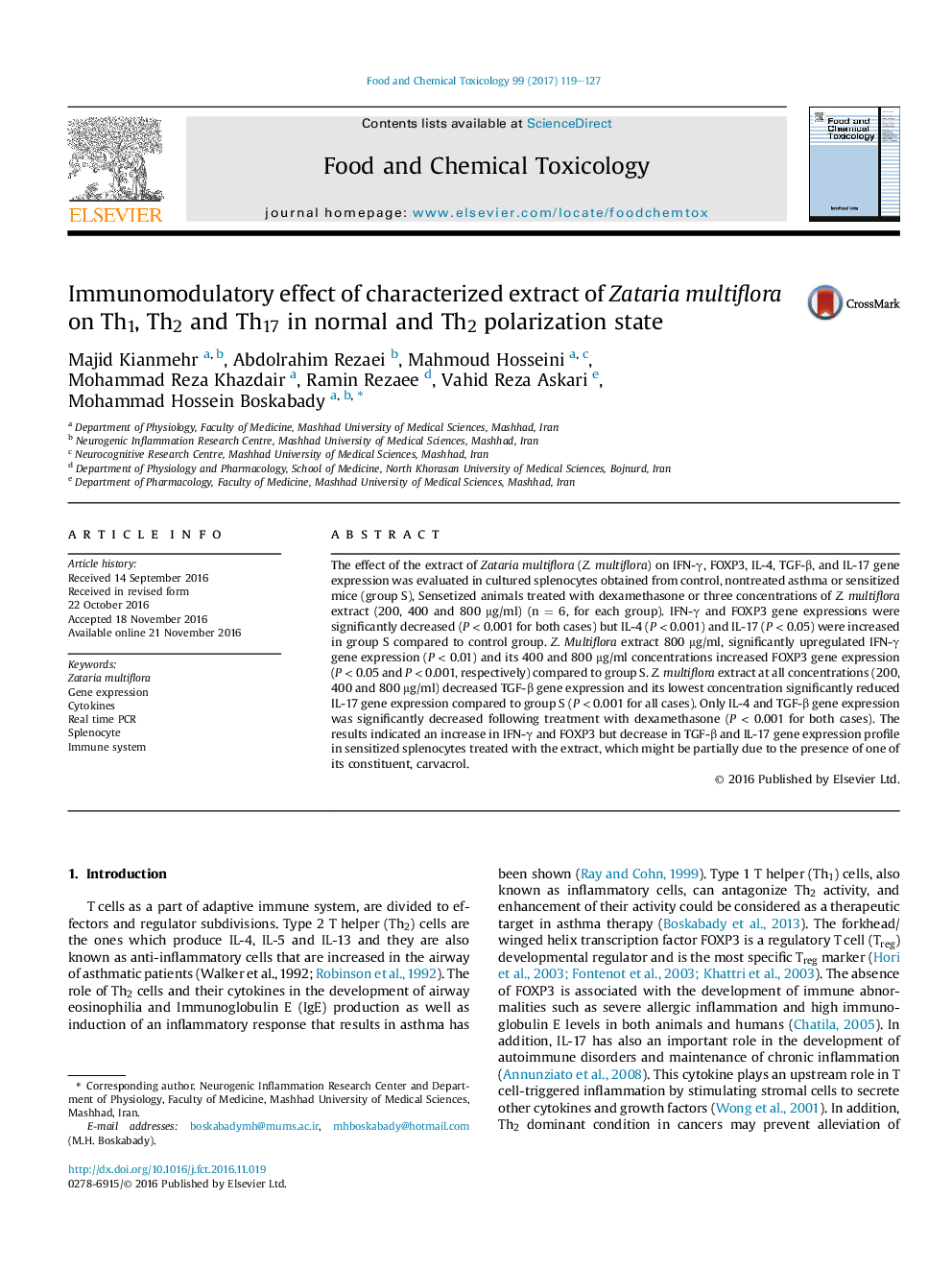| کد مقاله | کد نشریه | سال انتشار | مقاله انگلیسی | نسخه تمام متن |
|---|---|---|---|---|
| 5560333 | 1561746 | 2017 | 9 صفحه PDF | دانلود رایگان |

- Splenocytes from sensitized mice were treated with the extract of Zataria multiflora extract and dexamethasone.
- IFN-γ and FOXP3 genes expression were increased due to extract treatment in sensitized splenocytes.
- TGF-β and IL-17 genes expression were decreased due to extract treatment in sensitized splenocytes.
- Dexamethasone treatment of sensitized splenocytes leads to reduction of only IL-4 and TGF-β genes expression.
- Extract treatment affect pro-inflammatory and anti-inflammatory, while dexamethasone only anti-inflammatory cytokines genes expression.
The effect of the extract of Zataria multiflora (Z. multiflora) on IFN-γ, FOXP3, IL-4, TGF-β, and IL-17 gene expression was evaluated in cultured splenocytes obtained from control, nontreated asthma or sensitized mice (group S), Sensetized animals treated with dexamethasone or three concentrations of Z. multiflora extract (200, 400 and 800 μg/ml) (n = 6, for each group). IFN-γ and FOXP3 gene expressions were significantly decreased (P < 0.001 for both cases) but IL-4 (P < 0.001) and IL-17 (P < 0.05) were increased in group S compared to control group. Z. Multiflora extract 800 μg/ml, significantly upregulated IFN-γ gene expression (P < 0.01) and its 400 and 800 μg/ml concentrations increased FOXP3 gene expression (P < 0.05 and P < 0.001, respectively) compared to group S. Z. multiflora extract at all concentrations (200, 400 and 800 μg/ml) decreased TGF-β gene expression and its lowest concentration significantly reduced IL-17 gene expression compared to group S (P < 0.001 for all cases). Only IL-4 and TGF-β gene expression was significantly decreased following treatment with dexamethasone (P < 0.001 for both cases). The results indicated an increase in IFN-γ and FOXP3 but decrease in TGF-β and IL-17 gene expression profile in sensitized splenocytes treated with the extract, which might be partially due to the presence of one of its constituent, carvacrol.
Journal: Food and Chemical Toxicology - Volume 99, January 2017, Pages 119-127